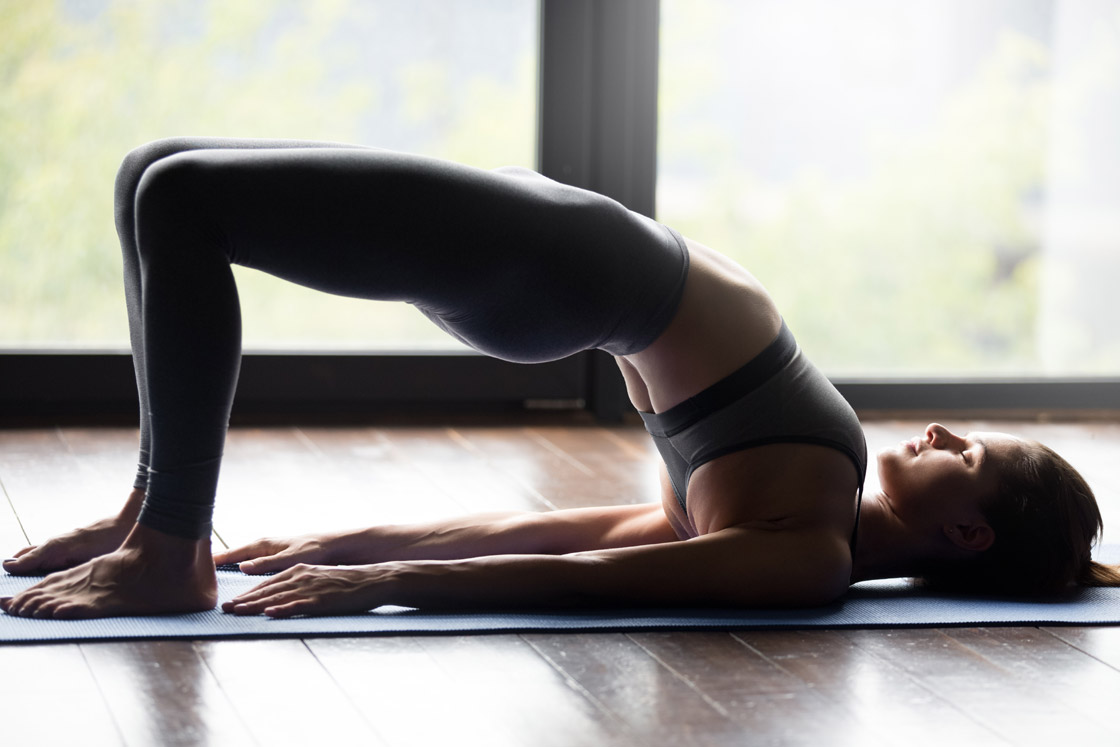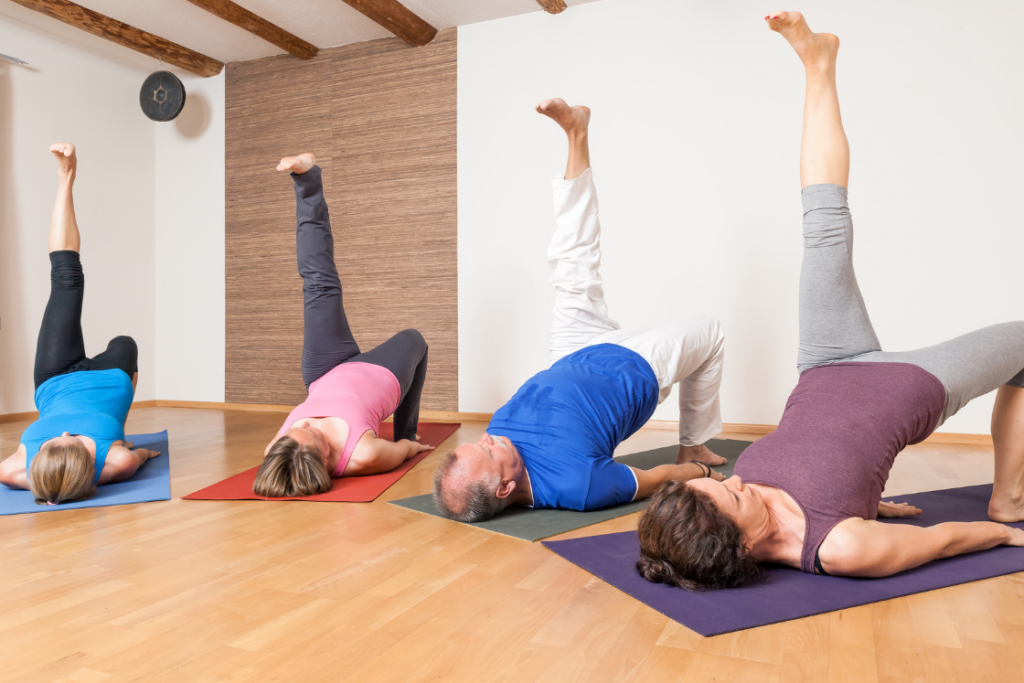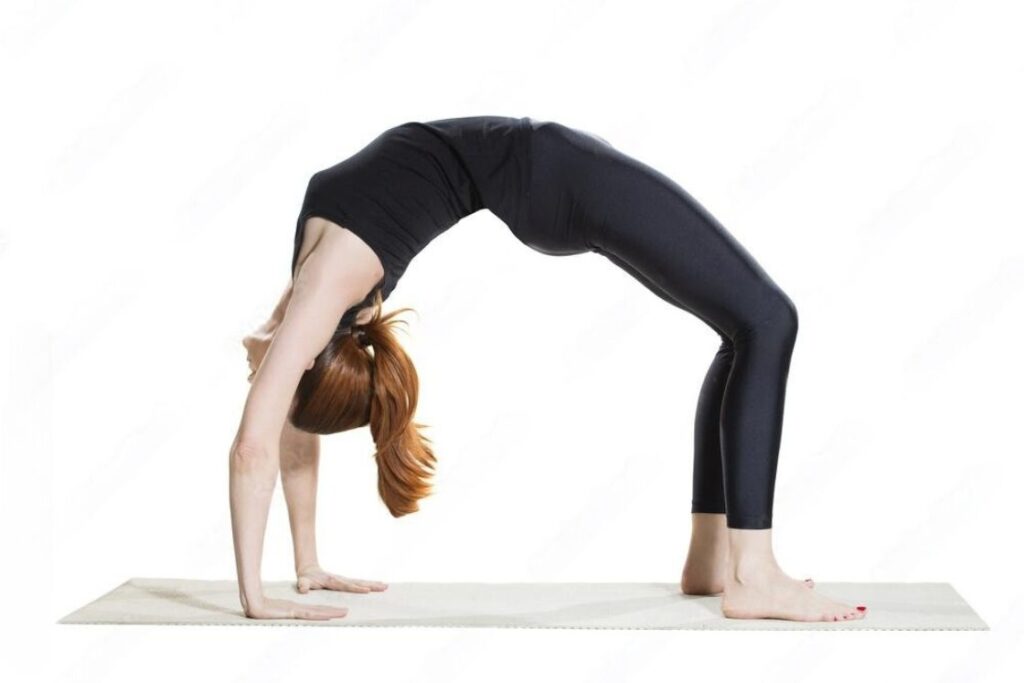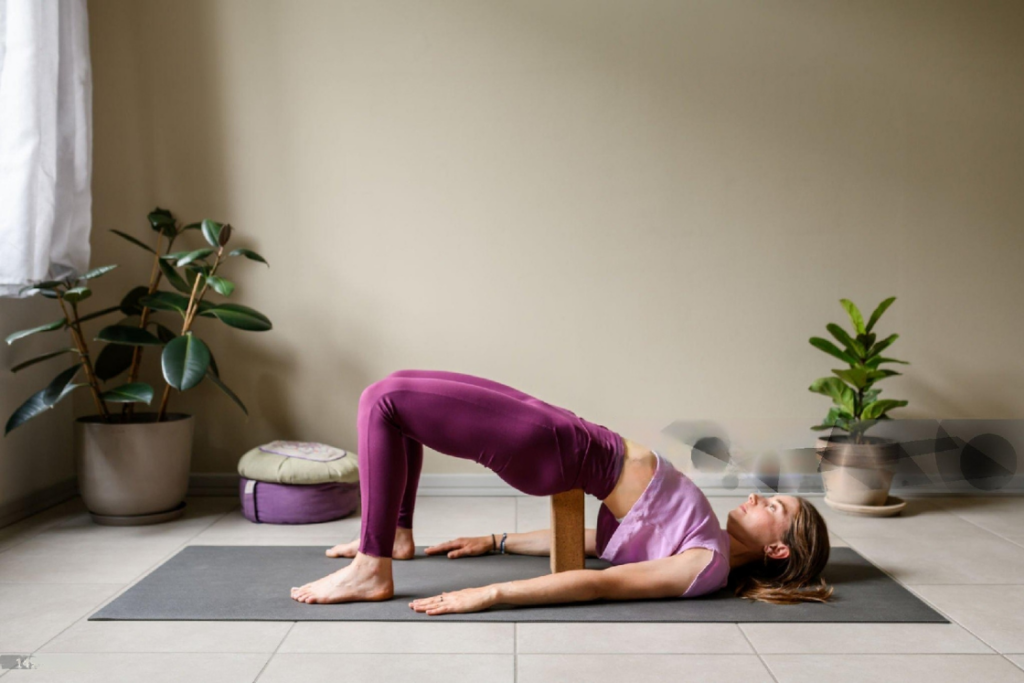
| Sanskrit Pronunciation | Setu Bandhasana (SAY-too BAHN-dhah-suh-nuh) |
| Which means | Setu = Bridge / Bandha = Lock / Asana = Pose |
| Pose Kind | Backbend, supine |
| Pose Degree | Newbie to Intermediate |
| Anatomy | Backbone, chest, neck, again, hips, thighs |
| Different Names | Bridge Pose, Setu Bandhasana, Setu Bandha Sarvangasana |
Bridge Pose, or Setu Bandhasana, is a extremely efficient yoga posture that enhances flexibility and power. This reclined backbend and chest-opening pose entails lifting your hips whereas mendacity in your again, forming a bridge-like form along with your physique. It stretches the chest and shoulders whereas strengthening the again, glutes, and thighs, making it a vital addition to any yoga apply.
Bridge Pose is especially helpful for counteracting the results of extended sitting. It helps enhance posture, alleviate low again ache, and stimulate stomach organs. Whether or not you’re aiming to alleviate discomfort from a sedentary life-style or looking for a full-body stretch, this pose gives a spread of advantages that promote general bodily well being and well-being.
Which means & symbolism
Bridge Pose, or Setu Bandhasana, derives its title from the bridge-like form your physique types whereas within the pose. In Sanskrit, “Setu” means bridge, and “Bandha” interprets to a lock or bond, making Setu Bandhasana imply “the pose that creates a bridge.”
Symbolically, Bridge Pose represents the connection between totally different elements of the physique and the mixing of thoughts, physique, and spirit. Very similar to a bodily bridge connects two factors, this pose bridges the hole between stability and suppleness, power and leisure. It serves as a metaphor for overcoming obstacles and connecting with a deeper sense of inside power and steadiness.
How one can do bridge pose(steps)

- Lie in your again on the ground along with your arms at your sides and toes hip-width aside.
- Bend your knees and produce your toes in direction of your hips, protecting your knees pointing upwards.
- Place your arms beside your physique, palms dealing with down.
- For extra assist, you could maintain your ankles along with your palms.Inhale and press your toes firmly into the ground.
- Raise your pelvis off the bottom, adopted by your decrease again after which center again.
- Be certain that your toes stay flat and weight is evenly distributed.
- Keep away from lifting your heels.Stability in your shoulders and toes, elevating your again and hips as excessive as attainable.
- Tuck your chin gently in direction of your chest with out forcing it.
- Maintain the pose for 30-60 seconds, respiratory deeply and specializing in the move of power.
- To launch, exhale and slowly decrease your again to the ground.
- Unfold your legs and chill out. Transition to Savasana (Corpse Pose) for additional leisure if desired.
Observe-up pose
Variations of bridge pose
- One-Legged Bridge Pose: Raise one leg off the ground whereas in Bridge Pose, protecting it prolonged straight up. This variation challenges steadiness and engages the core and glutes extra deeply.

- Wheel Pose (Urdhva Dhanurasana): Transition from Bridge Pose to Wheel Pose by urgent your palms and toes into the ground, lifting your complete physique into an arch. This superior variation will increase the depth and extends the stretch.

- Supported Bridge Pose: Place a yoga block or bolster underneath your sacrum for assist. This variation helps chill out the decrease again and supplies a restorative choice.

- Bridge Pose with Ft Collectively: Convey your toes collectively and press them into the ground. This variation might help strengthen the inside thighs and enhance alignment.
Precautions
- Don’t overarch your decrease again. Use your core and glutes to assist your backbone and keep away from again pressure.
- Preserve your knees aligned along with your toes. Use a block between your knees if wanted to remain aligned.
- Preserve your head and neck relaxed and on the mat. Don’t flip your head or put stress in your neck.
- If lifting your hips is difficult, use a yoga block or bolster underneath your sacrum for assist.
- In the event you really feel any ache or discomfort, come out of the pose. Don’t push your self right into a place that feels strained.
Contradictions
- Don’t do that pose in case you have extreme neck ache or accidents, as it may well make them worse.
- Watch out or keep away from this pose in case you have shoulder accidents, as a result of it places weight in your shoulders.
- Test with a physician earlier than doing this pose in case you have severe spinal points like a herniated disc.
- Pregnant individuals, particularly later in being pregnant, ought to keep away from or modify this pose since mendacity in your again can have an effect on blood move.
- Skip this pose should you’ve had latest stomach or again surgical procedure till your physician says it’s okay.
- When you have hypertension that isn’t managed, watch out, as lifting your legs may elevate your blood stress.
Advantages of bridge pose (setu bandhasana)
Bridge Pose (Setu Bandhasana) strengthens and tones the physique whereas enhancing flexibility and general well-being. It improves posture, boosts power, and alleviates stress. This pose helps spinal well being and promotes psychological calmness.
- Strengthens the Backbone and Core: Bridge Pose successfully engages and strengthens the muscle tissues alongside the backbone and within the core. By lifting the hips and again, it helps spinal alignment and enhances core stability, which is essential for general physique power.
- Stretches the Chest and Neck: This pose supplies a delicate stretch to the chest, neck, and shoulders. The opening of those areas helps relieve rigidity and enhance posture, which might alleviate discomfort from extended sitting or poor posture.
- Improves Flexibility: Common apply of Bridge Pose enhances flexibility within the backbone, hips, and thighs. Elevated flexibility in these areas contributes to a larger vary of movement and ease in performing different yoga postures.
- Stimulates Stomach Organs: The compression of the stomach throughout Bridge Pose massages inside organs, aiding in digestion and boosting metabolism. This stimulation helps preserve a wholesome digestive system and helps general inside perform.
- Enhances Temper and Reduces Stress: By growing blood move to the mind and activating the parasympathetic nervous system, Bridge Pose promotes leisure and reduces stress. This will result in improved temper and a larger sense of psychological well-being.
- Helps the Respiratory System: Stretching the chest and opening the lungs in Bridge Pose enhances respiratory capability. Improved lung perform helps higher oxygenation and general respiratory well being.
- Tones the Pelvic Ground: The engagement of the pelvic ground muscle tissues in the course of the pose helps tone and strengthen this space. This will contribute to raised pelvic well being and assist for reproductive organs, in addition to assist regulate menstrual cycles in girls.
Conclusion
Bridge Pose is a helpful addition to any yoga apply resulting from its various advantages. It successfully improves posture and alleviates decrease again ache by stretching and strengthening the again, glutes, and core. The pose additionally stimulates stomach organs, aiding in digestion, and enhances general flexibility.
By incorporating Bridge Pose into your routine, you may deal with the unfavourable results of extended sitting, assist spinal well being, and enhance bodily power and suppleness. Its versatile nature makes it a vital posture for attaining a balanced and efficient yoga apply.
FAQs bridge pose (setu bandhasana)
Rookies ought to maintain the pose for 20-30 seconds, step by step growing as much as 1 minute as you construct power.
Sure, it’s accessible for inexperienced persons and may be modified with props like a yoga block underneath the sacrum for added assist.
Guarantee your toes are hip-width aside and your weight is evenly distributed. Keep away from overextending and think about using a prop for assist.
Slowly decrease your again right down to the ground, unwind your legs, and chill out earlier than transitioning to a different pose or mendacity in Savasana.
Give attention to partaking your core and glutes. Use props like a block or bolster underneath your sacrum for assist and step by step work on growing your vary of movement.
Keep away from turning your head to the facet, putting an excessive amount of weight on the neck, or overextending your again. Preserve your toes and knees aligned.
It’s greatest to seek the advice of with a healthcare supplier, however modified variations may be secure with correct steering.
Sure, it strengthens the again muscle tissues and improves spinal alignment, which might alleviate again ache when practiced appropriately.

